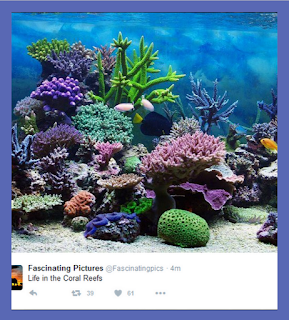Sometimes science is a treasure hunt, and the only
clues you
have to guide you are a hand-drawn map and a brief, 40-year-old
scientific paper
that suggests something amazing might be found somewhere under the
ocean. And then you go look, and you actually find that something
amazing.
A recent paper
published in the journal Science Advances describes the discovery of a
600-mile-long (966-kilometer-long) coral reef
system in the Atlantic Ocean, under the muddy plume of the Amazon River. It
was overlooked for so long because corals reefs are generally known for preferring
shallow, clear water, and conditions at the mouth of the Amazon have more
commonly been described as "turbid" or even "goopy."
"You don't really look for things unless you think it's
possible they could be there," says oceanographer Patricia Yager of the
University of Georgia, one of the principal investigators on the study.
In 2012, Yager and her research team received funding to go
to the mouth of the Amazon to study how the nutrient-rich plume of the world's
largest river affects the ocean. In order to study the plume, she had to get
permission from the Brazilian Navy, who required that she bring on several
Brazilian scientists as collaborators. One of these was a reef ecologist named
Rodrigo Moura, from the Federal University of Rio de Janeiro.
Moura spent the cruise reading
the conditions of the sea floor until he found a spot hard enough to
support a coral reef. There, the team put a dredge down in the water and pulled
up a sample of what was underneath the boat.
With many thanks to How Stuff Works
See also
Newly Discovered Victorian Reef 'Teeming With Life'
Chile Creates Largest Marine Reserve in the Americas




